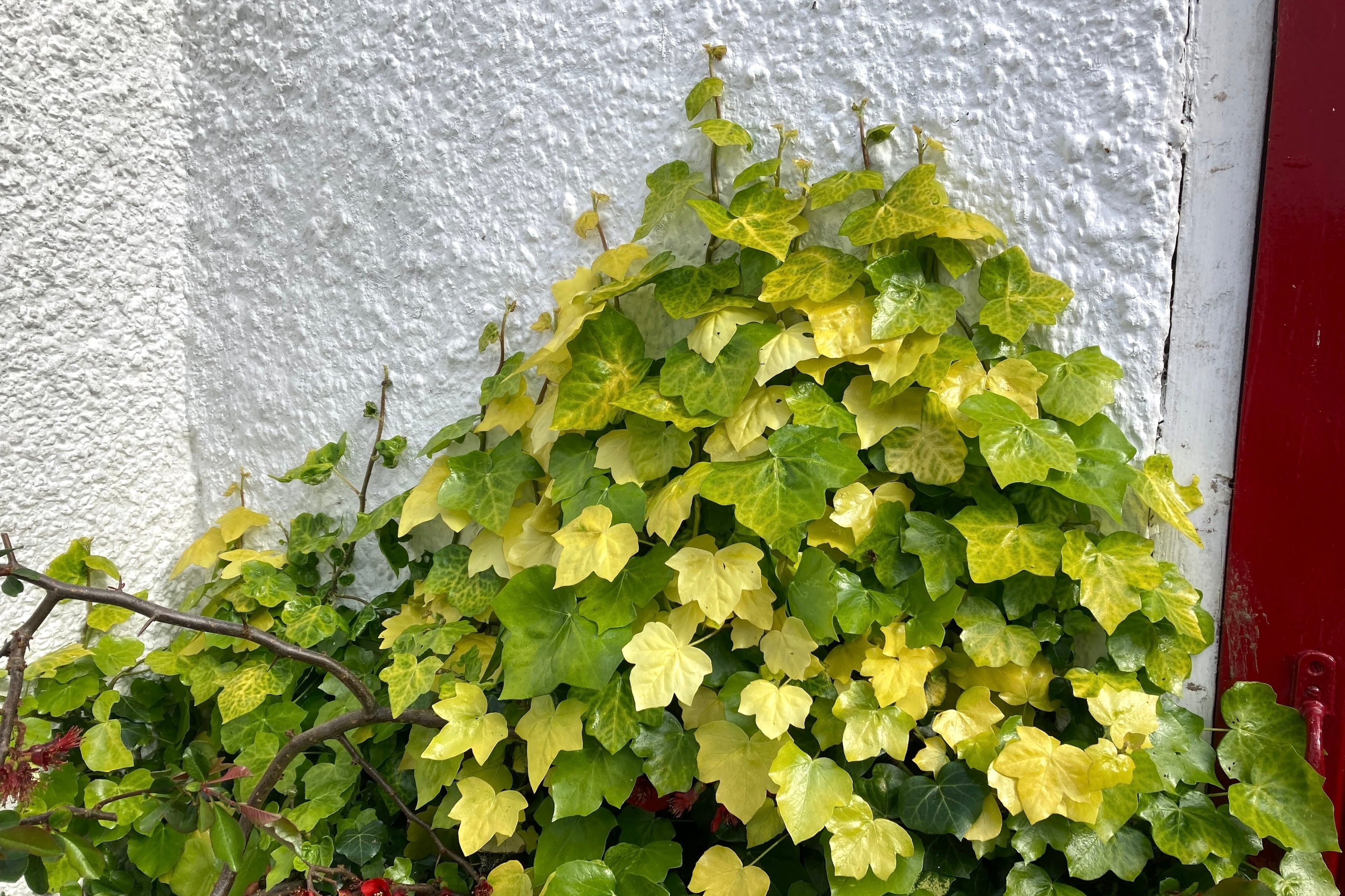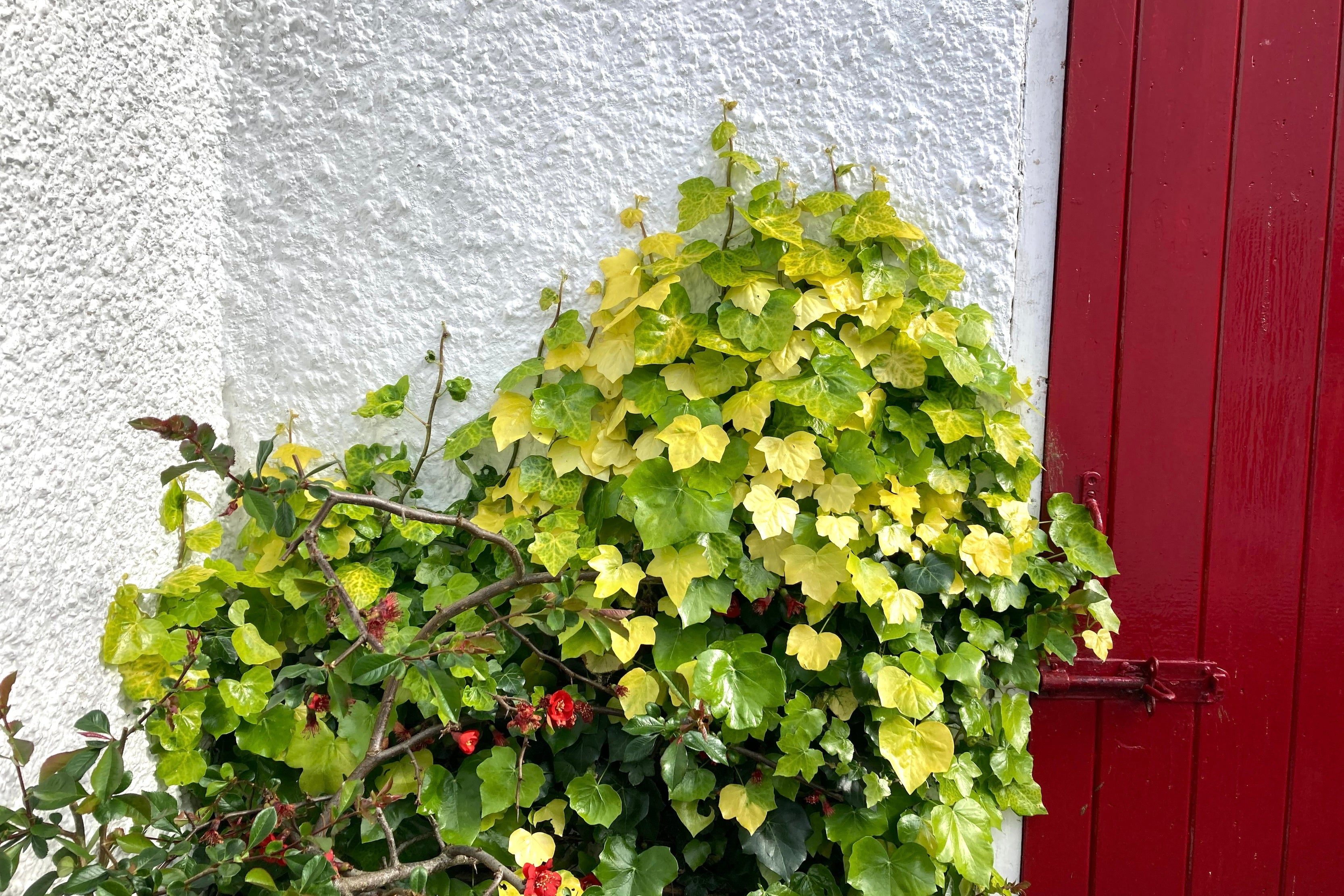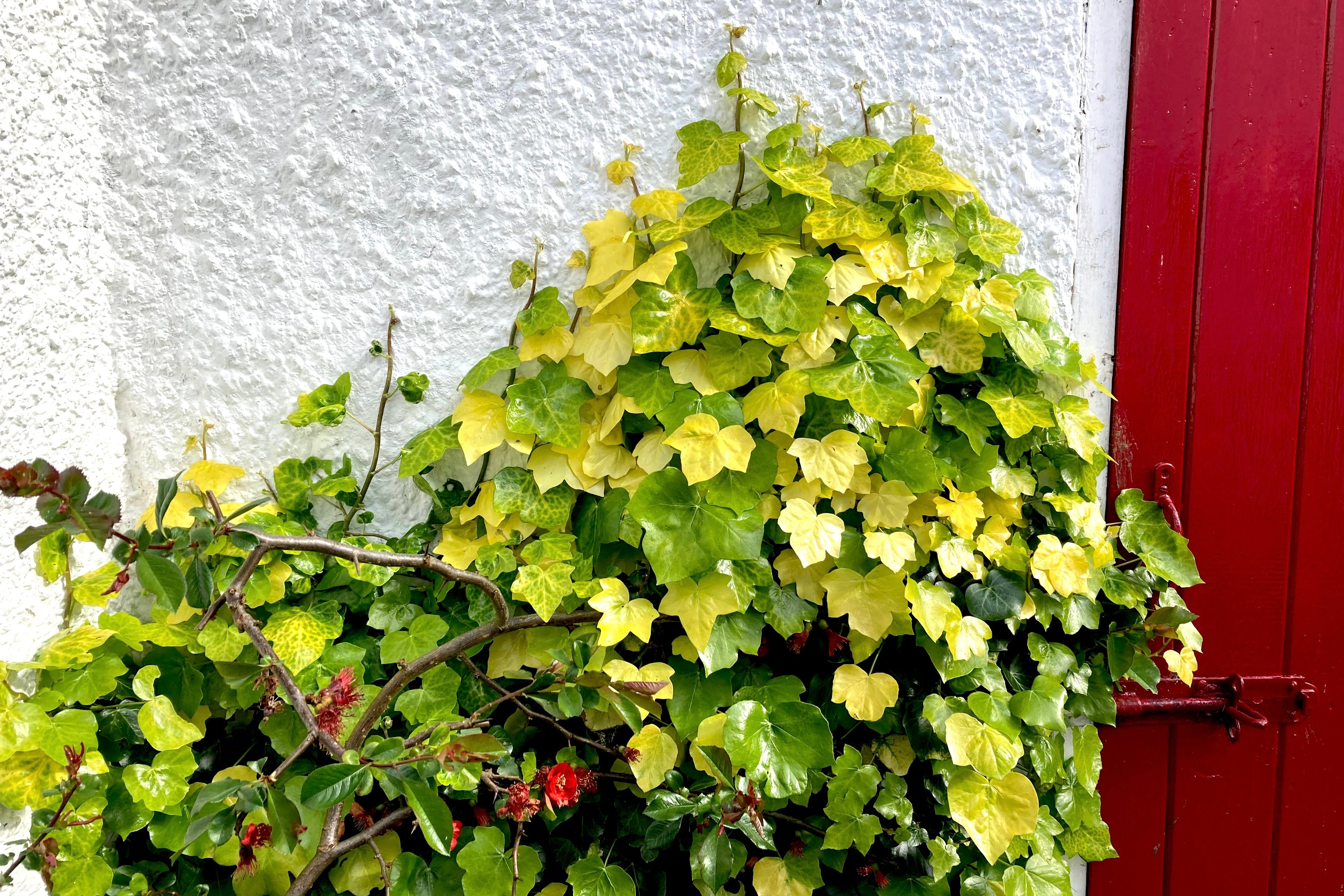Hedera helix 'Buttercup'
Approx. 0.5 litre pot
About this cultivar:
Hedera helix 'Buttercup' is an evergreen climber that boasts broad, boldly lobed leaves that paint a vibrant yellow hue (turning pale or greenish in shaded spots). Quite often some leaves are yellow, some are green, and some are mixed.
A lively addition to any garden. Bursts of yellowish-green flowers signal the arrival of autumn, soon followed by spherical black fruit dangling amidst the large funky leaves.
This Ivy is very slow growing, so expensive, but it will be easy to maintain. It will also grow almost anywhere - including full sun.
Photo is growing beside Chaenomeles x superba 'Knap Hill Scarlet'
It has the Royal Horticultural Society Award of Garden Merit (RHS AGM).
- Position: Full sun, partial shade
- Soil: Almost any soil, grows well in Ballyrobert
- Flowers: September
- Other features: Royal Horticultural Society Award of Garden Merit (RHS AGM), Grows well in Ballyrobert
- Hardiness: H5 - Hardy in most places throughout the UK even in severe winters (-15 to -10°C), Fully hardy - grows well in Ballyrobert!
- Habit: Climbing
- Foliage: Evergreen
- Height: 150 - 250 cm (5- 8 ft) Can prune smaller
- Spread: 100 - 150 cm (3.5 - 5 ft)
- Time to full growth: 5 to 10 years
- Plant type: Herbaceous Perennial, climber
- Colour: White, green, yellow
-
Goes well with: Drainpipes, roses, trees, walls, anything they can climb; even other clematis
About this genus:
Hedera is a genus comprising 10-15 species of evergreen climbing or trailing vines in the family Araliaceae. It encompasses a group of plants known for their versatility, ornamental value, and ecological importance.
The genus name Hedera is the Classical Latin word for 'ivy', which is cognate with Greek (khandánō) 'to get, grasp'. The moniker "ivy" finds its roots in Old English, from "ifig," possibly related to the German "Efeu," though its original meaning remains a mystery. In the annals of British vernacular, now mostly forgotten, quaint names like "Bindwood", “Bentwood”, “Hibbin” and "Lovestone" once described its tendency to cling to and drape over stones and bricks. Beyond its botanical confines, the name "ivy" has been liberally applied to a disparate array of flora, from Boston ivy to poison ivy to creeping ivy, each bearing little botanical relation to its namesake.
Culturally, ivy carries weight. It captivated European minds with its resilience through winter, leading to its adoption as a talisman against malevolent spirits. In ancient Rome, ivy wreaths supposedly staved off drunkenness, adorning Bacchus himself. Taverns in Britain historically flaunted ivy-wrapped poles as beacons of revelry, a tradition that lives on in pubs like "The Ivy." Its clinging nature also renders it a symbol of enduring bonds, with priests once gifting it to newlyweds. Moreover, in medieval Christianity, it symbolized the eternal soul's perseverance beyond bodily demise. Even the prestigious American Ivy League universities owe their name to the imagery of ancient buildings draped in ivy.
Originating from Western, Central, and Southern Europe, as well as stretching across Macaronesia, northwestern Africa, and all the way to Japan and Taiwan, Hedera species boast an almost global footprint. Their adaptability to diverse climates and soil types has led to their cultivation and naturalization in various corners of the world. You'll find these ivy species thriving in forests, woodlands, and clinging to rocky cliffs, where they play vital roles as both habitat providers and erosion controllers. They should manage fine in your garden.
Hedera species sport distinctive traits that set them apart. Their leaves typically display palmate lobes, though some may flaunt unlobed or entirely smooth leaves. The foliage itself spans a spectrum of sizes, shapes, and hues, ranging from rich greens to variegated patterns of green, white, or yellow.
Come flowering time, Hedera species grace us with modest clusters of small, greenish-yellow blooms arranged in umbels or panicles. These inconspicuous flowers may not catch the eye at first glance, but they attract pollinators like bees and butterflies. And once the blooms fade, dark berries take their place, providing nourishment for birds and other wildlife.
It’s remarkable knack for scaling heights and clinging to surfaces owes its prowess to specialized structures known as adventitious roots. These roots secrete a sticky substance, allowing the plant to latch onto walls, trees, and various vertical surfaces.
In gardens, Hedera is a versatile player, serving as ground covers, climbing vines, or trailing beauties. They thrive best in partial to full shade, though they're adaptable to various light and soil conditions once settled. Ivy isn't too picky; it'll make itself at home in almost any soil that's not too extreme.
While it's reputation for vigorous growth and spreading tendencies precedes it, some species and cultivars are more well-behaved than others and can be kept in check with routine trimming and care.
In essence, the genus Hedera presents a diverse array of species and cultivars, offering both visual appeal and ecological advantages. Whether adorning walls, carpeting the ground, or gracing containers, ivy remains a timeless choice for infusing greenery and dimension into our lives.


















